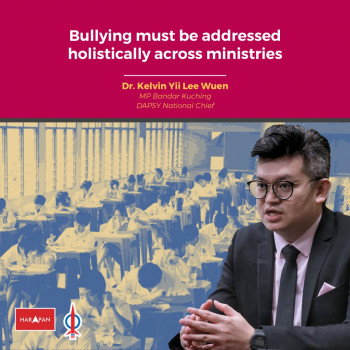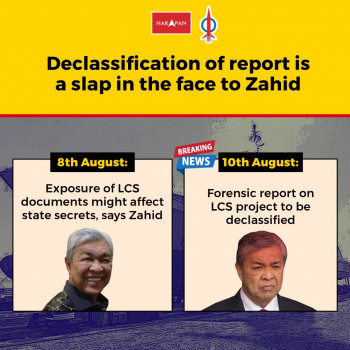
Article by Howard Lee
17th June 2021
The length of time one is protected from COVID19, or ‘term of protection’, either through vaccination or natural infection – is something that no one knows authoritatively yet. Antony Fauci, head of U.S. National Institute of Allergy and Infectious Diseases (NIAID) has said that data so far shows protection from vaccines last at least six months and likely a year.
Immunity developed naturally after being infected with COVID-19 can last for up to eight months, according to research published in American Association for the Advancement of Science. According to some, protection given by vaccines can sometimes- but not always- be stronger and last longer, but there’s simply not enough data to be definitive in these uncharted waters.
All this sounds confusing at best, contradictory at worst. All in all, the general term of protection bandied around by those qualified and prominent for vaccines currently administered in Malaysia might last around 8 months to a year. It cannot be stressed enough though, that these are guesses, albeit by very qualified people.
Other experts in the field are also highlighting the possibility that future ‘escape variants’ – or mutations- of SARS-CoV-2 will be stronger and more formidable than its current versions. It is also not impossible that these will even ‘escape’ the protection afforded by current available vaccines altogether.
This is before we even consider reinfection after recovery and its level of disease, or ‘breakthrough cases’ of severe disease despite vaccination. In the last few days, there have been quite a number of COVID19 fatalities of individuals who have received two doses of vaccines coming from several countries. If these are still rare and isolated, are we prepared for them to become more prevalent?
Whilst I would be the first to call out big Pharmas on their fear mongering on profiteering tactic through their talks of ‘booster vaccines’, it really does beg the question of whether or not we are ready for the second round of vaccine. Second round meaning, the next round of vaccinations for when the first cycle of protection ceases, bearing in mind that this current interval may only protect us for a year. Imagine having to go through mass vaccinations and long queues outside PPVs again by end of 2022, because the current round of protection by vaccines taken this year has lapsed.
Even more poignantly, are we even acknowledging that COVID19 could turn, or is turning endemic? Most who have raised this concern, are confident that COVID19 will be in a less potent form in comparison with the current one. But is that something we can afford to be confident of considering how badly the world is being hit by the velocity and ferocity of the most recent variants?
Until and unless we have a super pancoronavirus vaccine that doesn’t just mitigate serious illness, but actually eliminates the virus, or at least prevents infection and transmission, we really can’t be sure what is or is not possible.
Are we able to imagine a future where variants of the virus will emerge and attack in thicker and faster intervals? Do we have the research, development and manufacturing capacity for vaccines – whether it be variant specific boosters or otherwise- to keep up with the prospective mutations? Will we have, and are we willing to invest in formulation to fill-and-finish vaccine manufacturing and development capacity to prepare for these possibilities and/or eventualities?
Are we prepared to accept and plan for the new norm and tomorrow’s reality that involves vaccination centres being a permanent fixture of our cityscapes, urban constructs, and rural settlements? Do we have the human resource to staff it all?
The Minister for vaccine coordination, in a recent forum organised by the Oxford and Cambridge Alumni Network, has admitted that Malaysia “probably cannot afford to do this a second time around” when asked about procuring and providing free vaccinations if the virus goes endemic. Therefore there is at least an acknowledgement that the risk of COVID19 turning endemic is real, yet there is not yet a Malaysian strategy and a plan- whether it be on procurement, administration or fiscal- to gear up for a second round vaccine.
It must be disclaimed here that we might have already seen the end of new stubborn lethal variants of SARS-CoV2 rising and terrorising the world. We might find further down the line, the existing vaccines may prove to have much longer terms of protection with sustained efficacy than anticipated. It might even be that within months someone develops a new vaccine that can eliminate infection and transmission altogether. We might see a sudden and steep climb in vaccinations rates, and a correlating nosedive in infection and mortality rate come end of year. We might even be back to our pre-COVID19 lives this time next year. All that I’ve put forward here might be just a dark, bleak and doomsaying trajectory that is too bleak to all come true. We might live happily ever after.
Then again, we might not. Nobody knows.
Many of us assumed that governments around the world, including our own, would be able to pull off an action-movie-like ‘just in time’ rescue of the world when the pandemic first broke out. We all can see and are feeling the brunt of its failure. If what has happened to the world in the last 18 months hasn’t taught us a lesson on the importance of mainstreaming a ‘just in case’ governance mindset in the face of this seemingly unending pandemic, then we deserve to be and are doomed.
So better plan, act now to be prepared in time. Better be bold than to be broken; better be safe than sorry; just in case.
Howard Lee
DAPSY National Chief
ADUN for Pasir Pinji
FULLY VACCINATED
Sources
1. https://www.ncbi.nlm.nih.gov/pmc/articles/PMC7919858/
2. https://www.washington.edu/news/2021/04/13/covid-19-vaccines-escape-variants-of-the-coronavirus-are-a-serious-future-threat/



